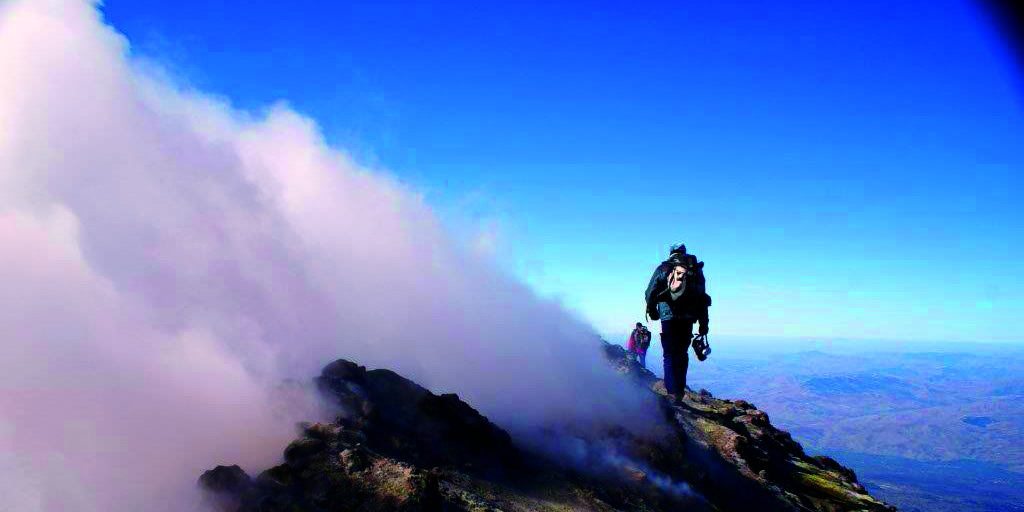The results of this scientific collaboration have been recently published in the scientific journal Surveys in Geophysics.
The Institute of volcanology of the Canary Islands (INVOLCAN) has led a research work that provides new data on the Etna volcano (Italy); the most active volcano in Europe and one of the 16 Decade Volcanoes. Researches of the Institute of Technology and Renewable Energies (ITER), the National Institute of Geophysics and Volcanology, INGV (Italy), the University of Cambridge (United Kingdom), and the Universities of Tokio and Shizuoka (Japan).
Active subaerial volcanoes often discharge large amounts of CO2 and H2S to the atmosphere, not only during eruptions but also during periods of quiescence. These gases are discharged through focused (plumes, fumaroles, etc.) and diffuse emissions. Several studies have been carried out to estimate the global contribution of CO2 and H2S emitted to the atmosphere by subaerial volcanism, but additional volcanic degassing studies will help to improve the current estimates of both CO2 and H2S discharges.
In October 2008, a wide-scale survey was carried out at Mt. Etna volcano, one the world’s most actively degassing volcanoes on Earth, for the assessment of the total budget of volcanic/hydrothermal discharges of CO2 and H2S, both from plume and diffuse emissions. Surface CO2 and H2S effluxes were measured by means of the accumulation chamber method at 4075 sites, covering an area of about 972.5 km2. Concurrently, plume SO2 emission at Mt. Etna was remotely measured by a car-borne Differential Optical Absorption Spectrometry (DOAS) instrument.
Crater emissions of H2O, CO2 and H2S were estimated by multiplying the plume SO2 emission times the H2O/SO2, CO2/SO2 and H2S/SO2 gas plume mass ratios measured in situ using a portable multisensor. The total output of diffuse CO2 emission from Mt. Etna was estimated to be 20,000 ± 400 t day−1 with 4520 t day−1 of deep-seated CO2. Diffuse H2S output was estimated to be 400 ± 20 kg day−1, covering an area of 9.1 km2 around the summit craters of the volcano. Diffuse H2S emission on the volcano flanks was either negligible or null, probably due to scrubbing of this gas before reaching the surface.
During this study, the average crater SO2 emission rate was ~2100 t day−1. Based on measured SO2 emission rates, the estimated H2O, CO2 and H2S emission rates from Etna’s crater degassing were 220,000 ± 100,000, 35,000 ± 16,000 and 510 ± 240 t day−1, respectively. These high values are explained in terms of intense volcanic activity at the time of this survey. The diffuse/plume CO2 emission mass ratio at Mt. Etna was ~0.57, that is typical of erupting volcanoes (mass ratio <1). The average CO2/SO2 molar ratio measured in the plume was 11.5, which is typical of magmatic degassing at great depth beneath the volcano, and the CO2/H2S mass ratio in total diffuse gas emissions was much higher (~11,000) than in plume gas emissions (~68). These results will provide important implications for estimates of volcanic total carbon and sulfur budget from subaerial volcanoes.

